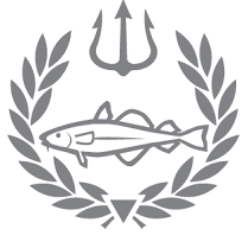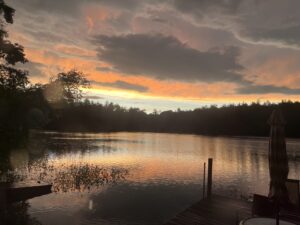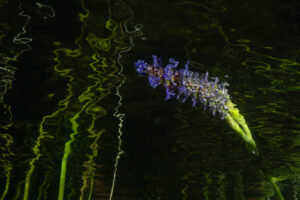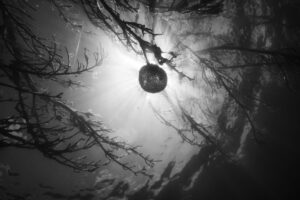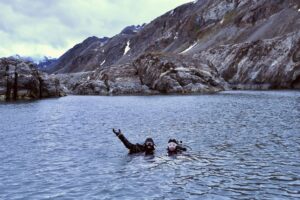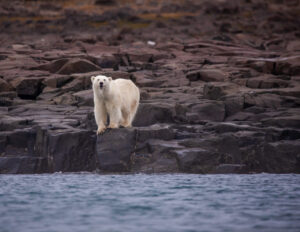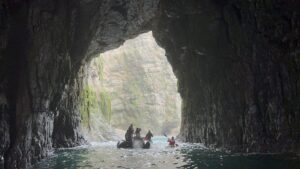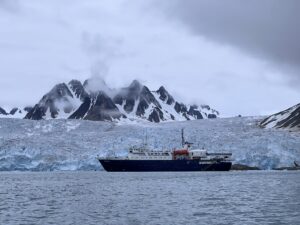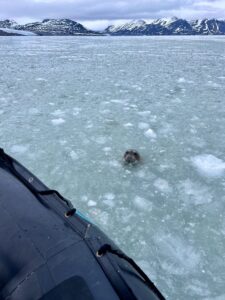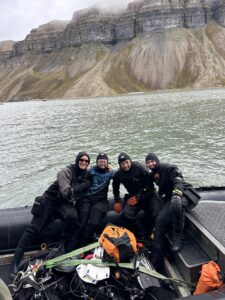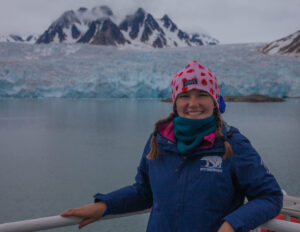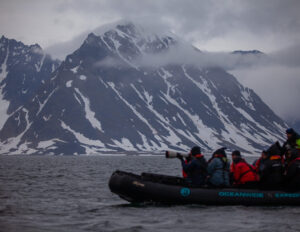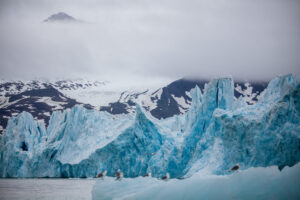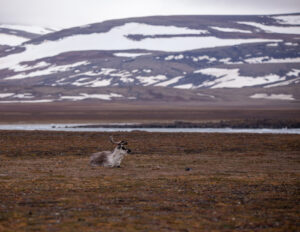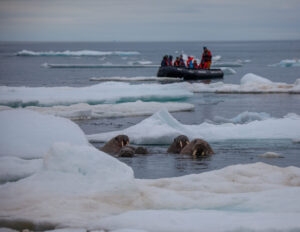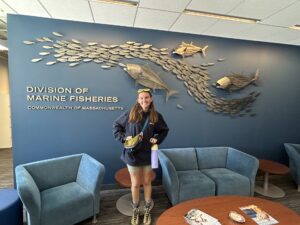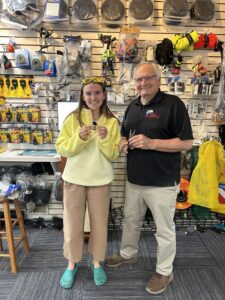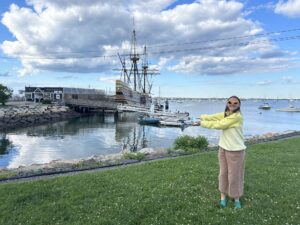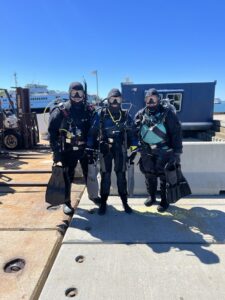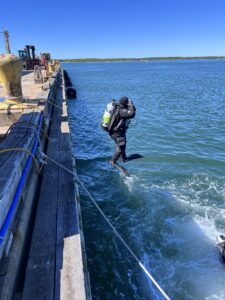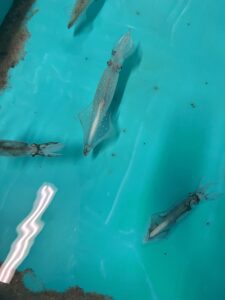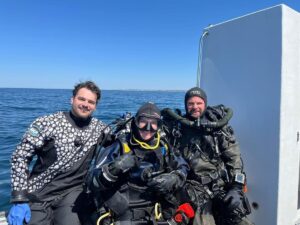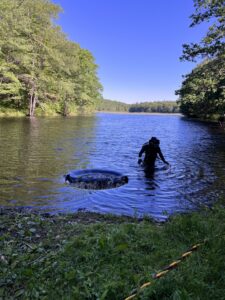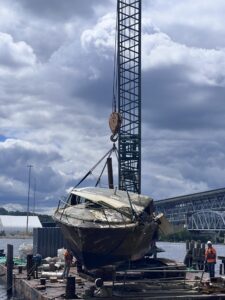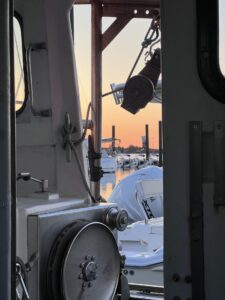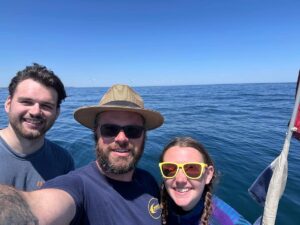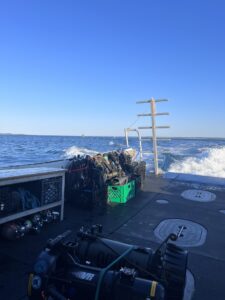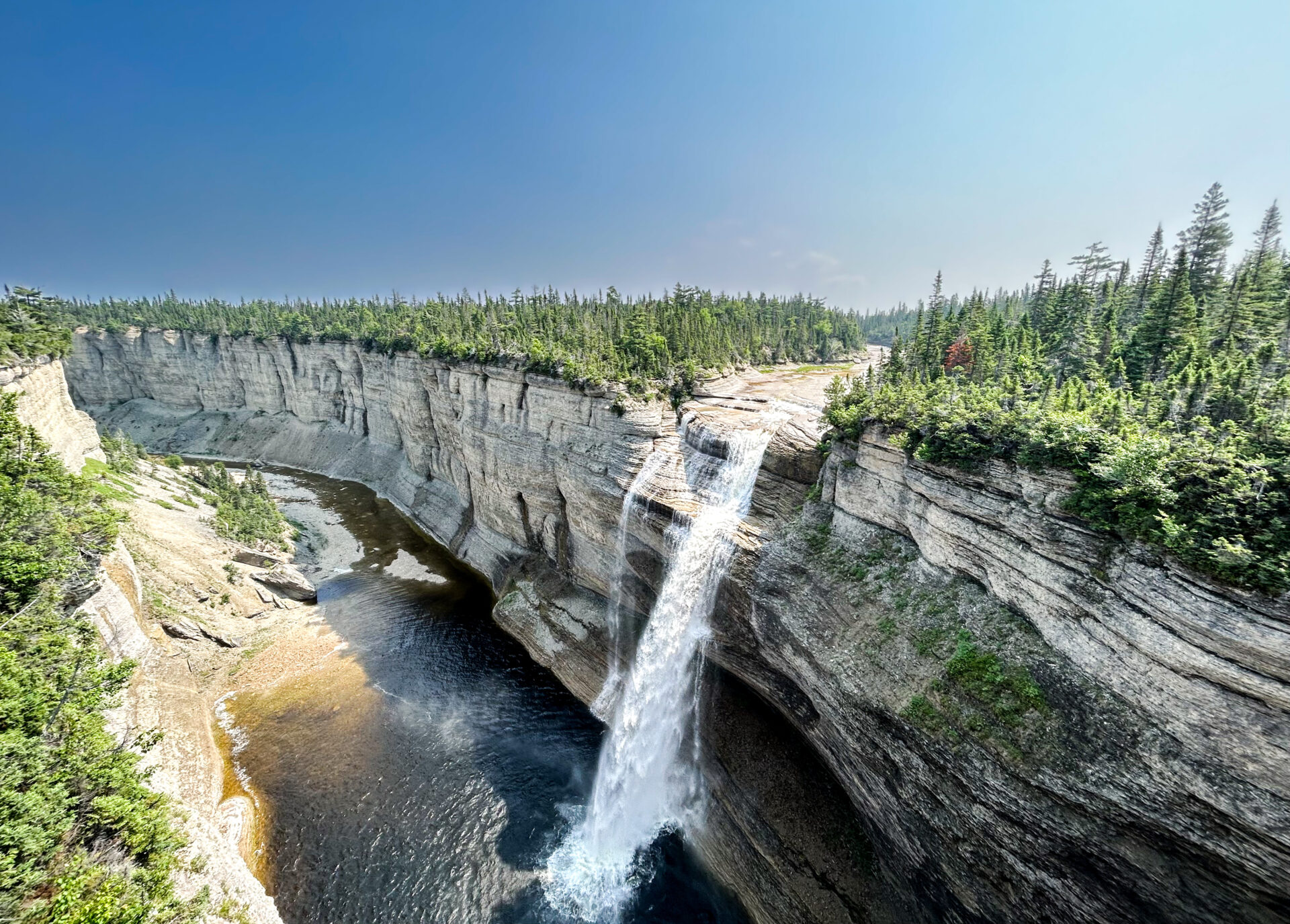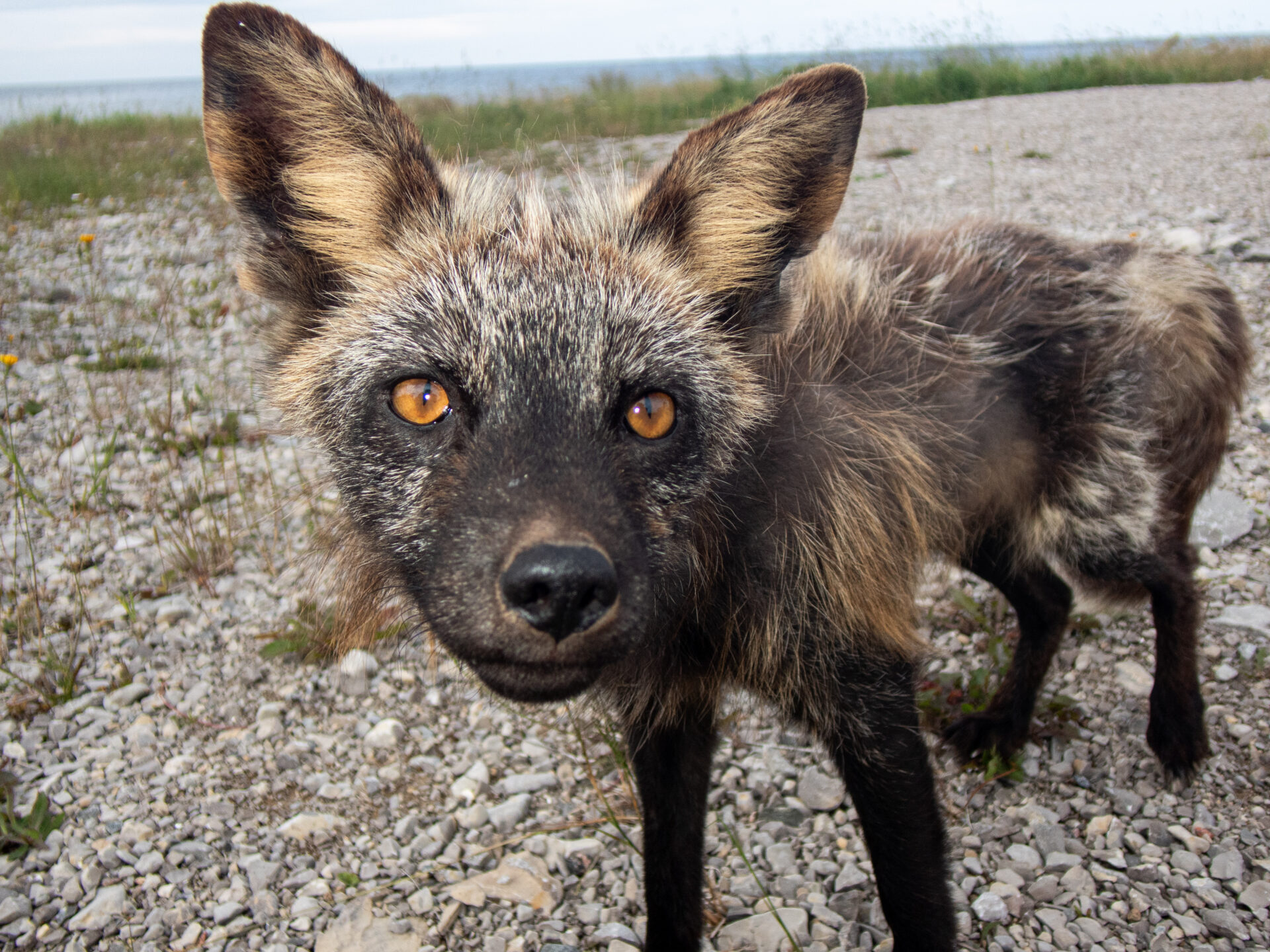Diving in Anticosti was going to be exciting; even though most of my diving experience had been in New England waters, I had never been that far north. These northern waters meant it was time for some more practice in my drysuit! For my first dive with Julie and Michel, I got to tag along on a checkout dive for one of their customers who would be joining the trip later in the week. Going on a checkout dive from the shore of Port Menier would be a safe water to not only get a little acclimated to the water, but also to check on my weighting, trim, and any other small details. So, we suited up on the boat ramp, and started our dive! Immediately descending on our swim out, I saw one of the biggest lobsters I think I’ve ever seen underwater, and he was even missing a claw. Michel, his customer, and myself all swam along, practicing hovering after a depth change and making sure we were acclimating to the water, after about 20 minutes of swimming, Michel had me launch an SMB from depth, that way we could ascend safely in the event of any boat traffic, while also providing a visual reference for out ascent. It was great practice and I’m thankful I was given the chance do it! Our dive for the day was nothing crazy, but definitely a well needed checkout dive in a new area, our dive had a max depth of 25 feet, for a little over 32 minutes. There were lobster, crabs, and smaller invertebrates littering the bottom, and I was excited to see more soon enough!

The day before customers arrived on the Island, Julie and Michel had received word that a boat part was somewhere in a given area, and they were curious to look for it, a s it could make an interesting dive site. We woke up early for our my first dive off of their boat, the Limitless. Diving today would be Julie, one of her friends and dive guides Nick, and myself, with Michel as out Captain! While the weather wasn’t ideal with some denser fog and 2 foot waves, going diving off of a smaller boat is always fun! We took a ride out to the expected coordinates, and then got ready to get in. Once we were in, we rolled off the side together and took a heading towards the general area we wanted to look. We began our decent and noticed that the visibility would be a bit lower than expected, quite like Rhode Island waters actually; with around 4-5 feet of visibility due to a lot of silt floating around the water from a mixture of the winds and tides. We swam following our heading for about 100 feet, until we came upon an object that was certainly man-made, but had been sitting in its spot for well over a few years, as it was concreted to the ground and covered in growth. Utilizing the TG6 Camera system provided by Backscatter photo and video, I was able to take some murky photos so that Julie could review them latter on to figure out what the object was! We swam around a little longer around the area to look for anything else, but eventually began our ascent. Upon reaching the surface, we used two SMB’s in order to help Michel find us in the fog. This was a super fun first dive to do with them, and a great opportunity to get the process of diving off Limitless down before customers arrived.
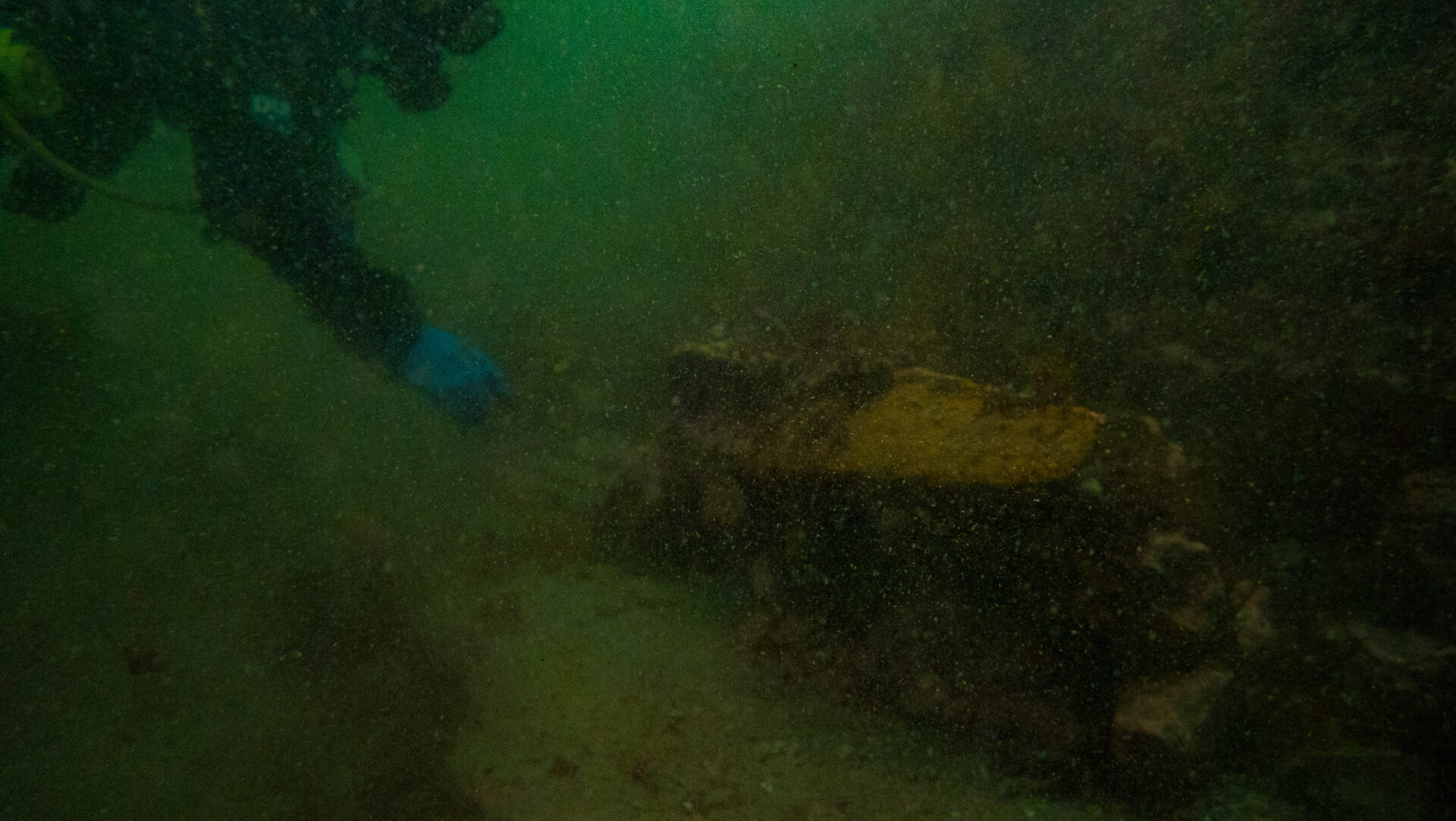

The next two dives we had in Anticosti would be with Julie and Michel’s customers! Having prepped their gear beforehand, we met all of the customers at the boat and got dressed in out drysuits. The ride out to the dive site went well, and we all got dressed and ready to roll off the boat. Our first dive site of the day was a place called “Drifters,” named after the small animals they found hitching a ride atop jellyfish! We entered the water and descended together into 40 feet of water. Throughout the dive, I towed an SMB on my reel so that Michel could follow along in the boat. One of the most unique features about diving in Anticosti is the topography! The ground in almost all of the dive sites is flat limestone rock, with very little silt or sand, making it easy to plan dives but also more complicated or vague when navigating around. We drifted gently with the minimal current on the site, swimming around and looking for the macro creatures like nudibranchs and decorator crabs that entice divers to come. We even found a huge lobster hiding beneath of the larger boulders at the site! After a nice dive in 44 degree water for 54 minutes, we spent a nice surface interval relaxing on the boat while we headed to the next dive site. Our second dive of the day was going to be the coldest, and deepest of the trip. So w got suited up again, and entered the water. On our descent to the bottom we passed through a visible thermocline, and made our way to he 60 foot depth. The water was immediately cooler than the last dive, with the computers thermometer gradually declining till it settled at 38 degrees! The combination of the depth and cold decreased our maximum dive time, but we still enjoyed a great 40 minute dive, finding large feathered and norther red anemones on the side of boulders, and spotting a ton of nudibranchs hidden in the algae. Coming up to do our safety stop was a nice relief as we passed through the thermocline, and the temperature immediately rose to above 45 degrees. After warming up on our stop, we boarded the boat and began our trip home! We stopped at the large buoy marking the channel and took a group photo, and arrived at the dock a few minutes later! Since it was the first dive I had done with Julie, Michel, Nick, and their customers, I forwent bringing the camera as too not be too task loaded, and still able to lend a hand.
The diving in Anticosti is truly a special experience, and I’m so thankful for Julie and Michel making it possible. I would also like to again thank Fourth Element for providing their Hydra drysuit and Xerotherm undergarments, they kept me nice and comfortable even through the longest of out dives throughout the trip!
